A Virtual Art Trip Through South America
Part 3 – Art In The North-Andean Region
Our three parts tour of South America is coming to the end with this article. Our trip through the continent took us to most corners of South America and it made us love and appreciate it tremendously. It’s a continent with much to offer and a diversity that is almost unrivaled. In this part our focus is on the Andean region, where we travel through from Colombia via Ecuador and Peru to Bolivia, just to jump back to Venezuela for the final closure (unfortunately, with the current situation in the country serving more as a reflection than a tour; we can only hope that the situation stabilizes soon enough). In the first part of this article series we travelled through the four southern-most South American countries Argentina, Chile, Uruguay and Paraguay. In the second ‘non-Spanish-speaking’ part we looked into Brazil and the three Guyanas. Now it’s time to round it all off. Hope you enjoy it.
Colombia – Into a new era
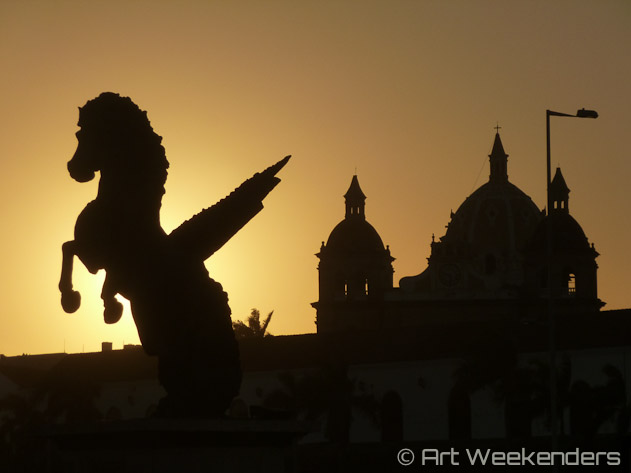
Sunset in Cartagena, Colombia
Colombia, the country which for many years was associated with crime, war and drugs, and from where very little positive news sipped out, is since a couple of years the hit travel destination it so deserves to be. For us the trip through the continent ended there, in Cartagena, an end that honestly came too soon. Colombia is a truly beautiful country with so much within its borders, that we felt the whole continent is represented here: beautiful mountains, deserted beaches, lush valleys, jungle and a cultural life easily feeding all art enthusiasts’ senses. Given the geography of the country, there are a few different Colombia’s we got to know better during our stay: the capital Bogotá is just simply totally different from the Caribbean coast, while Medellin and the green valleys around it are also completely different worlds. Let alone the differences between the Amazonian jungle near Leticia and the salsa-dancing Cali.
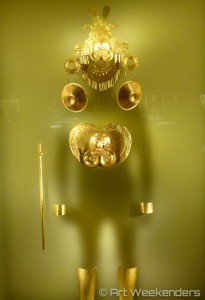
Bogotá is a surprisingly modern city with a well-established historical heritage to look back on. Those who expect a monotonous concrete jungle will be surprised, we generally found the modern architecture much more cheerful and more stylish than what you see in other rapidly evolving metropolises. The old town around La Candelaria – where we stayed in a very charming guesthouse – is a well-preserved colonial gem and here you’ll find many of Bogotá’s highlights.
Two of our highlights were the world-famous Botero Museum and the Gold Museum, the most important museum of Colombia, if not the continent, which is a place for history, culture and art in one, and really unmissable. Bogotá’s museums are all free, at least for now, which is not only very convenient for budget travellers, but also a great way to stimulate the locals to indulge some art once in a while.
Medellín, the city of the eternal spring, is going through a total transformation in these post-Pablo-Escobar days. In the nineties this city only got mentioned in connection with the war of and against the drug lords, but today we experienced it as a very inviting place, where more and more foreigners choose to have their long-term base. This is also the city where the Colombian artist Fernando Botero was born. Many of his sculptures are spread out around the centre, with 23 of them at the Plaza Botero in front of the Museum of Antioquia. This museum is the main art museum of the city and apart from more of Botero’s work inside, it has an excellent collection of art varying from Pre-Colombian times until contemporary art. The MAMM, the Museum of Modern Art, is another great art venue, with a very rich cinema-art collection.
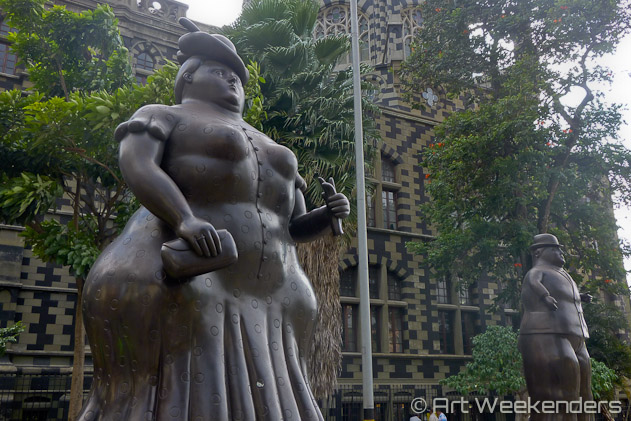
Plaza Botero, Medellin, Colombia.
Some of the other riches of the country are quite literally almost out of sight, sometimes we found them tucked away in remote, yet picturesque towns like Popayan in the south-west, or Pamplona in the Andean north-east. Travelling up north along the coast we found beautiful Caribbean beaches, some of them still unspoilt, with Cartagena as the cultural highlight of the area. This city seems to have been one of the few places in the country that just carried on with life during the decades of crises and to have come out relatively unscathed. While walking around the historical part of town we almost felt ourselves being back in time, the colonial architecture here is still well-preserved. Art-wise we did not find the museums to match the architecture, but then again, breathing in the atmosphere of this walled UNESCO World Heritage Site with its history, boutiques and nightlife – and beautiful beaches closeby- make Cartagena for us one of the places we’d warmly recommend you to go when in the country.
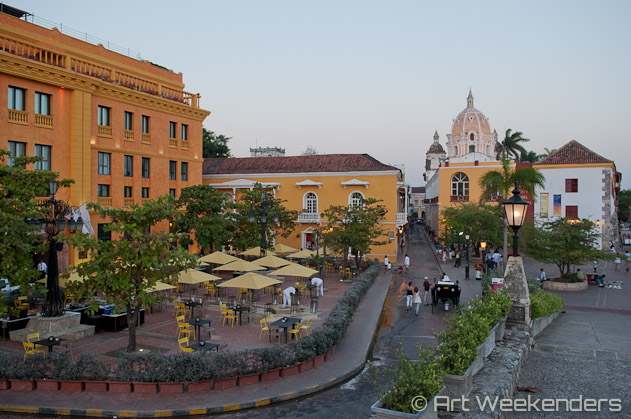
The historical centre of Cartagena, Colombia
Ecuador – A Microcosm of Impressions
The equatorial nation has for long time been known for its quite stable political climate, but while staying there, we felt it still isn’t the tourism destination it can be. It has, hands off, one of the biggest nature attractions in the world as part of its territory: the Galapagos archipelago and our trip to these islands is, by far, one of the most memorable travelling experiences we embarked upon, it feels simply unbeatable. During our time on the mainland we found loads more on offer, with both Quito and Guayaquil as interesting urban hubs, and enough in between and around them to make a potential several months long tour of the country still to feel inadequate. Quite remarkable for a small country like Ecuador is, with tropical forests, the Amazon, snow-capped peaks and a pleasant coastline.

View over Quito, Ecuador.
Sticking to the cultural side of the country, both Guayaquil but especially Quito will offer enough entertainment for anyone. Quito has one of the biggest and best preserved historical centers in South America, where the entire Old Town is a UNESCO World Heritage Site soaked in the scents of history. In between the main squares of Plaza Independencia and the absolutely stunning Plaza San Francisco there are heaps of architectural marvels and so many churches that even Paul Theroux had to spend a full chapter of his book ‘The Old Patagonian Express’ on discussing them. Looking at the city’s museums, it’s not on level with what we encountered in neighbouring Colombia, but the ‘Casa del Alabado’ certainly is a classy institution, a space that manages to combine the classic with modern in a stylish fashion.

Santa Ana Hill, Guayaquil, Ecuador.
Guayaquil – out at the Pacific Coast – is a rougher edged city, and specially used to be. After some glorious days in the nineteenth century, it had some rugged decades when dog-sized rats roamed the streets, or at least so they say. It’s a harbour city, thus some of that feel is still there, but we could see it went through some serious development the last couple of decades. Among our highlights here were the picturesque neighbourhoods of the Santa Ana hill, which almost entirely is a restored cultural monument adapted for tourism – with great views! –, and Las Peñas. The Malecon 2000 is part of a restoration project of the bank of the Guayas river, among others housing a great but smallish contemporary art museum (Museum of Anthropology and Contemporary Art).
Ecuador has a number of elegant small towns as well, which we found quite interesting. Cuenca in the Andean heights is a must and Otavalo a few hours north of Quito is a cultural experience with folkloric ties.
Peru – The Inca Heritage in a Modernised Setting
It’s not that easy to summarise Peru in just a few paragraphs either. The most visited country on the continent, with one of the most famous sites of the world, the astonishingly captivating Machu Picchu as the absolute highlight of the continent, Peru is a limitless nature and cultural experience. While the Inca heritage, the mysticism of the Nazca lines and the Amazonian tribes offer cultural experiences unparalleled anywhere else, there is plenty for the city-dwellers as well.
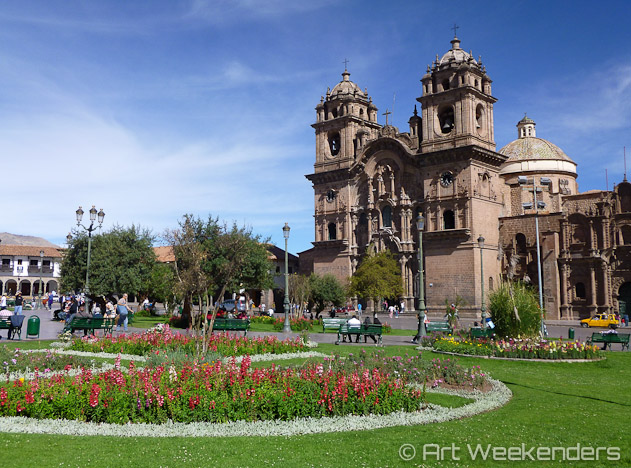
Plaza de Armas, Cusco, Peru.
Although Lima is the capital, without much doubt Cuzco is the city that is the centre of the Peruvian tourism. Its proximity to Machu Picchu is certainly playing in its favour, but the fact is that this is a city which on its own lives up to a self-earned reputation. Situated in the cradle of the Incan empire and highly influenced by the conquistadores, we met a wonderful mix of different cultural influences here.
The Plaza de Armas is certainly the focal point of the city, it offers an incredible atmosphere day or night. One of the most fascinating sites of the city is the Qurikancha. Meaning ‘golden place’, this is an old Incan sanctuary dedicated to the Sun God and later included as part of the Santo Domingo convent. Unfortuantely, the Spanish invaders destroyed a good part of the Incan site, but some remains still make it an amazing place. Cuzco has much-much more, both modern and ancient, not to mention the surroundings, so it’s easy to keep even a very long visit eventful. On the negative side it has to be said though that prices are high, even with Western standards.

Coastline, Lima, Peru.
Lima, the Peruvian capital, is by many considered a city to avoid. Determined to visit it anyways, we realised the contrary. Lima is a fantastic city, although its spawning suburbs are poverty-ridden, and it is definitely a must to visit if you’re in the country. In Miraflores, the prosperous part of town, the atmosphere is very different from what you see in the surrounding suburbs and its contemporary feel with great coastal location gives visitors a different vision of Lima than what most of its inhabitants mainly experience. Nonetheless, the truth is that development is rapid in Peru and life conditions are quickly improving, making this an ever more pleasant city to visit.
There are many highlights in the city, anything from ancient pyramids in the city centre to modern art galleries, with a diversity that is spawning over centuries. Also the influence of Asia on the city is big, especially noticeable in its cuisine – we’re absolutely convinced the tastiest cuisine in South America is the one found in Lima’s great restaurants. The MATE (Museo Mario Testino), with the largest collection of photographs by Mario Testino and art of other national and international artists, is likely the best museum of many, especially for contemporary art lovers.
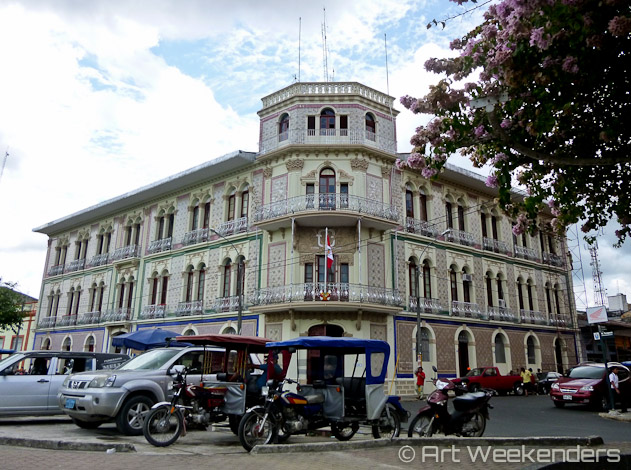
Iquitos, Peru.
Peru also has a countryside and a few provincial towns with beautiful historically preserved centres, like Trujillo on the northern coast. Arequipa in the south at the foot of the El Misti volcano is a true beauty too. It’s not only a launching spot for excursions up into the Colca valley, but also a cultural gem with architecture, convents and museums of high quality. Another experience of a kind is Iquitos in the middle of the Amazonian rain forest: its modern centre in the midst of the rainforest makes it come across as an oddity, especially knowing that no roads lead to this city of the old rubber barons.
Bolivia – The Introvert of the Continent
Bolivia is amazingly beautiful, but a tough love. Especially if altitude is not your thing – as in our case – the risk that you’ll end up feeling miserable most of the time due to the altitude is high. But if that’s not affecting your well-being, you’re in for a treat. While nature is causing major challenges for many travellers, culturally speaking it is a harsh country too: people are generally more reserved, or maybe we should say the smiles are just reserved for special occasions only. Bolivia has a history marked by conflicts, internal and with its neighbours, making it a culture marred by past experiences.
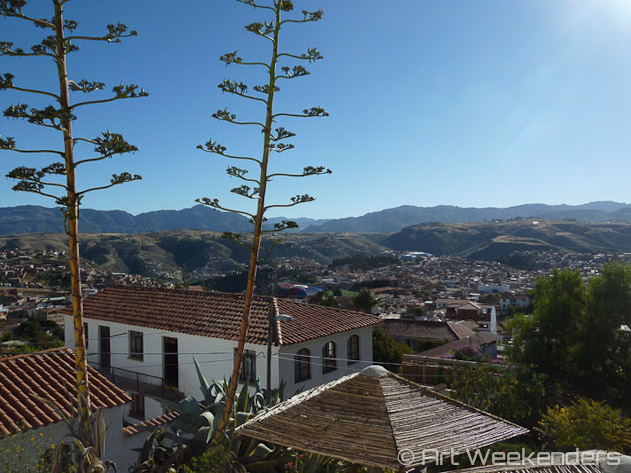
View over Sucre, Bolivia.
The Bolivian Altiplano is culturally speaking the centrepiece of the country, even though it also has a large Amazonian region, often forgotten. The latter is a different Bolivia all together, and is more similar to Brazil than what you find higher up in the country where the “true” guidebook Bolivia is. In between the two natural extremities of the Salar de Uyuni and the Titicaca Lake region there are two cities grabbing the visitors attention, also from a more art-oriented point of view.
Sucre is the most “Hispanised” of the Bolivian cities with a colonial core. The city is in fact still the legislative capital of the country, and it has some of the best universities around and a high-profile cultural life. It’s simply put, very different from the rest of the country, which has a more indigenous feel. The colonial atmosphere is not only created by great architecture, there are some great museums of historical value around too. Being on a more reasonable altitude of 2,800 meters, strolling the streets of the city was a great way for us to spend some lazy afternoons.
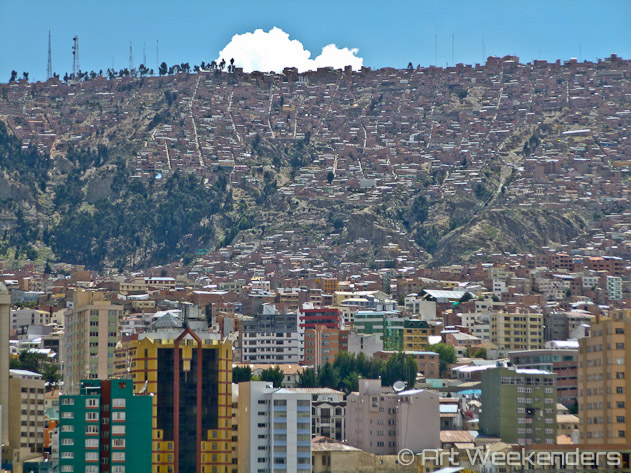
Living low and high in La Paz, Bolivia.
The biggest city of the country and the de facto capital, La Paz, is again very different. Being the highest capital in the world – especially counting its poor twin-town of El Alto at over 4,000 meters – this was another tough experience for us: steep streets, but with often breath-taking, great views. The city does have a modern side too, which might come as a surprise to most. Down in the valley – at relatively speaking more reasonable altitudes – we found the more modern and prosperous part of the city: La Paz is clearly a place where high is low and low is high, in the sense that the higher classes live down in the valley and poverty spreads at the top. In between is the historical centre, offering both great architecture, some decent museums and a mix of Westernised lifestyle with Quechua traditions. Here you’ll find the Witches Market just off the Sagarnaga street, the atmospheric ‘Calle Jaen’ with some of the few preserved colonial buildings in the city, together with the stately Plaza Murillo. Actually, one of the best ways of getting to know this city we found, is to just jump on local buses and criss-cross the city, from high to low and back: it’s a journey through many different worlds.
Venezuela – A Country in Need of Change
Venezuela used to be the pride of the continent, a prosperous country with many people well off. Unfortunately, it was an unbalanced prosperity, leaving a huge part of the population in poverty. Thus, it was not a surprise that the balance tipped over, but the revolution that came also destroyed the country. Being a tourist in Venezuela these days is a challenge: it’s a dangerous country, lawlessness and scarcity is wide-spread. As a visitor we found it quite hard to relax. Being on the edge is part of life here, and unfortunately, we noticed the same when we were there. Thus, giving a true assessment of the country from an art point of view is both not possible, but also unfair, given the priorities facing the ‘Bolivarian Republic’.
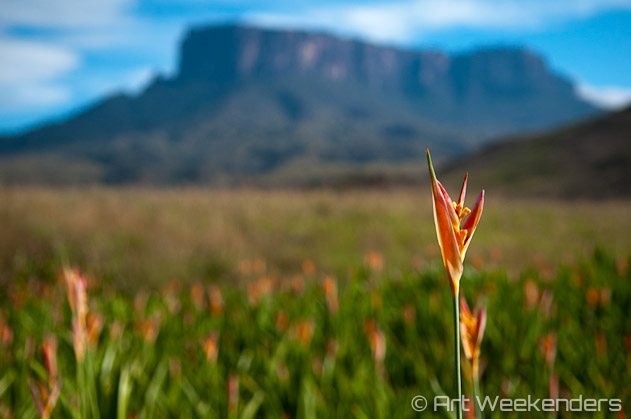
Kukenan, Venezuela
It’s a country with huge potential and a large cultural heritage, not to mention its amazing nature, but what the future brings remains to be seen. The struggle between left and right is resulting in a divided nation and this division is unfortunately seemingly destroying the country more and more. But a change can happen and if it does, we can only hope that it will be in the interest of the whole nation, not just the ones in power.
The country has a lot to offer, only seeing just a handful of the cities, from a cultural point of view both Ciudad Bolivar and Merida are rich cultural hubs. Puerto la Cruz feels like a Caribbean city with a rough edge, but with potentials. Caracas is said to have been one of the most pleasant cities around to visit, but we had to be skip it unfortunately. Anyways at this time giving a real assessment feels unjust, but we hope that one day we can come back for a proper visit under calmer, more stable circumstances. Until then, let’s hope that things turn to the better: we’ve seen that it is possible, Colombia has transformed for instance in just about a decade, so let’s hope something similar can happen here too. The sooner the better really.
If you enjoyed this post in our South American art highlights series, we would love seeing you return to our site for more of our stories. Follow us on one of our social media channels, Facebook, Twitter or Google Plus, or subscribe to our newsletter.
- South American Art Highlights – Part 1: Chile, Argentina, Uruguay, Paraguay
- South American Art Highlights – Part 2: Bazil, French Guiana, Suriname, Guyana